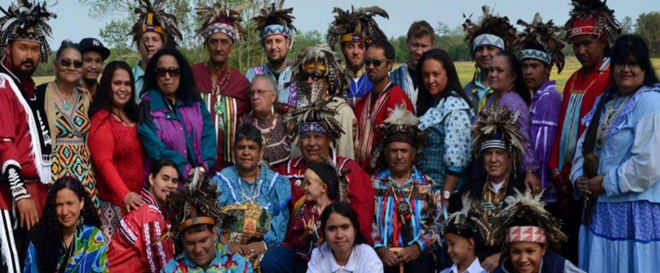How the Tuscarora Became the Sixth Nation. The Journey From the South to Niagara Falls
The Tuscarora Journey: From the South to Niagara Falls
How the Sixth Nation Found a Home and Kept the Fire Burning
High above the mist of Niagara Falls, on one of the tallest ridges in the region, there’s a place where stories run deep and traditions still echo through the longhouse. This is the Tuscarora Nation, the Sixth Nation of the Haudenosaunee Confederacy—a people who made a long and difficult journey to call Western New York home.
They came from the South. They were adopted by the Seneca. And every winter, they still gather to celebrate Midwinter, a powerful ceremony of fire, dreams, and renewal.
The Seneca Bark Longhouse at Ganondagan, near Canandaigua Lake, offers visitors an immersive look into Haudenosaunee life and culture, both as it was in the 17th century and as it continues today. Open seasonally from May through October, it stands as a powerful tribute to the enduring legacy of the Seneca people.
Who Are the Tuscarora?
The Tuscarora people once lived in what is now North Carolina. Their name means “shirt-wearing people,” and they spoke an Iroquoian language, just like their cousins the Mohawk and Seneca.
In the early 1700s, after a brutal conflict with English colonists—the Tuscarora War—they were forced to leave their homelands. But they didn’t disappear. Instead, they began a long journey north, toward family.
Welcomed by the Seneca, United with the Iroquois
In 1722, the Tuscarora arrived in New York. First, they were welcomed by the Oneida, then by the Seneca, who gave them land taken from the Neutral Nation during the Beaver Wars.
The Haudenosaunee Confederacy—also called the Iroquois Confederacy—officially made the Tuscarora the Sixth Nation, joining the Mohawk, Oneida, Onondaga, Cayuga, and Seneca. It was more than politics—it was family.
In 1797, the Seneca gave them land near Lewiston, and by 1803, the U.S. government granted them a federal reservation: the Tuscarora Reservation, where many still live today.
Midwinter Festival: Fire, Dreams, and a New Beginning
Every January or February, when the new moon rises and the nights are long, Tuscarora families gather in the Longhouse for the Midwinter Festival—one of the most sacred ceremonies of the Haudenosaunee year.
Here’s what happens:
🔥 The sacred fire is lit and burns for days
😴 People share and interpret dreams
🌿 Tobacco is burned to thank the Creator
🎶 There’s dancing, feasting, and storytelling deep into the night
Midwinter is a time to let go of the past, offer thanks, and start fresh. It’s not just a tradition—it’s a spiritual reset.
Life on the Ridge: Today’s Tuscarora
The Tuscarora Reservation is home to around 1,150 people, sitting high on the land northeast of Niagara Falls. But life here isn’t always easy.
In the 1960s, the New York Power Authority flooded part of the reservation to build a reservoir for the Robert Moses Niagara Power Plant, displacing families and damaging the water supply. To this day, the community deals with unsafe wells, polluted groundwater, and the fight to protect their land.
Yet the people remain strong—keeping the language alive, holding the Longhouse ceremonies, and raising their children in the shadow of the same hills their ancestors walked.
The Spirit Lives On
The Tuscarora people are:
💬 Storytellers keeping their history alive
🧑🎓 Educators and artists sharing their knowledge with the world
🔥 Spiritual leaders tending the sacred fire
🌿 Protectors of land and water, still resisting broken promises
They are not gone. They are not forgotten. They are here—still dancing, still dreaming, still rising with the fire of Midwinter.
Want to Learn More?
Visit the Tuscarora Nation (check for public events)
Walk the hills above Lewiston, where ancient stories still rest in the land
See our staff to learn more ways to connect! And click here to read directly from the haudenosaunee confederacy website.



